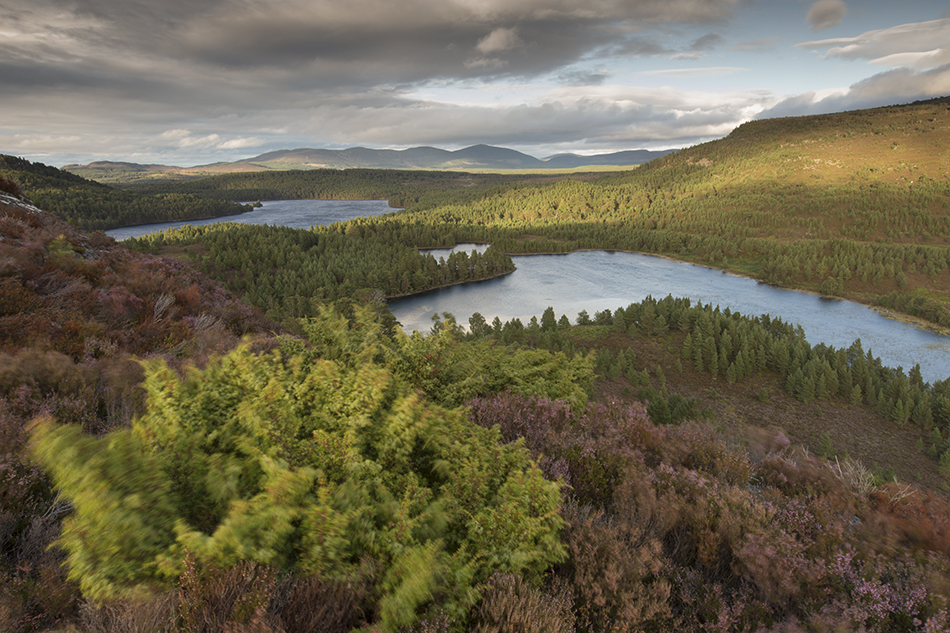Every 5 years the Cairngorms National Park reviews its priorities and the 18,000 folk who live and work within its boundaries, alongside anyone with an interest in the Park, are invited to contribute their thoughts. As with all democratic processes, the result of this review will please some and disappoint others and for those who don’t get what they want, the National Park becomes a “waste of time.” Such perceptions are predictable but are they justified? Is the Cairngorms National Park a waste of time and more fundamentally, what are Britain’s National Parks for?
In Scotland there is a legislative obligation on the part of National Park Authorities (the people employed to run the Parks) to coordinate the delivery of four core objectives. In short, they are charged with protecting nature whilst also promoting economic growth.
Whilst I have always understood the political desire to have Parks that are everything to everybody, I’ve never been fully convinced that delivering what many might argue are opposing objectives, is possible. With the best will in the world, a thriving economy with its associated infrastructure – roads, shopping centres, power lines, waste – will inevitably impact on an area’s natural heritage, or at the very least, limit its expansion and connectivity, therefore leading to a loss in functionality.
Around the world the National Park brand is synonymous with wild, untamed landscapes and in most cases, visitors expect to see spectacular wildlife. Here in the UK, National Parks are very different. They are working ‘cultural’ landscapes where human impact is actually celebrated rather than lamented; where wild nature has been tamed and is often a background decoration rather than the main attraction. The Cairngorms National Park is slightly different in that it started life with much more ‘wild land’ and a greater abundance of species but nevertheless, it still looks like a place unsure of its own identity and where its long-term objectives, one way or another, prioritise people’s needs.
I’m not suggesting that Britain’s National Parks should adopt the American model and become people-free zones but I am suggesting that in striving to equally accommodate the economic aspirations of local communities, whilst setting ambitious targets for nature conservation, compromise will be inevitable. And that’s what we have in Britain’s National Parks: compromised landscapes. In the Cairngorms, and I know it to be the case elsewhere, that means that despite the rhetoric, there is limited opportunity for the sort of ambitious restoration of the Park’s natural heritage that would enable the Cairngorms to sit alongside the best National Parks in the business. If driving up the A9 there is no material difference in the landscape outside the Park than that inside, then what’s the point? What are National Parks for?
In my view, the Scottish (and English and Welsh) government has to decide whether they’re serious about world-class National Parks to attract what is increasingly, a discerning global audience. To do that, the legislation governing National Parks has to change to allow not only the safeguarding of natural heritage – in the main that is already severely impoverished – but its tangible improvement. That objective then has to predominate over economic development: the two cannot be equal partners. It’s not necessarily a case of one or the other; it’s a simple matter of priorities.
I don’t believe that the Cairngorms National Park is a waste of time and I don’t under-estimate the difficulty in delivering challenging objectives. But if I look towards the horizon, I see an impasse in the making; a deadlock in a system that tries to fuse competing interests all claiming their right to precedence. The Park Authority is then faced with the impossible task of balancing those interests. In short, I see more compromise on the way.
The result of that compromise in the Cairngorms right now is a National Park where non-native forestry plantations are accepted and even encouraged; where widespread habitat degradation is tolerated and under certain circumstances, encouraged; where raptor persecution is still active and whilst condemned, shows little sign of being addressed with real intent.
If we can’t prioritise space for wild nature and deliver meaningful ecological restoration within the boundaries of our National Parks, there is more compromise on the way. Personally I don’t believe that necessarily means National Parks are a waste of time but I am left wondering what they are for?
You may agree or disagree with my thoughts and interpretations but either way, none of us can complain about the outcome of the Park Plan review, if we don’t contribute. Follow this link to do exactly that. http://cairngorms.co.uk/big-park-big-questions/







I agree with you that the National Park’s aims of “protecting nature” and “promoting economic growth” can be opposing objectives. I have never understood why the economy needs to constantly grow. Why can it not just stay the same? Although there are roads, town, villages in the Cairngorm National Park the status it has, so far, protected it from large scale industrial development such as wind farms or mining. In my opinion these can cause far more damage to fragile eco systems than tourism, especially if that tourism leans towards sustainable, low impact ventures.
In the report “Unfinished Business – A National Parks Strategy for Scotland” by John Mayhew there is a call for seven more National Parks to be created. One of these, the Galloway National Park, would be very welcome to many, many people in this area which contains the only area of Wild Land in south-west Scotland and is home to a Dark Sky Park and Biosphere.
Thanks Bea. A network of National Parks with a robust set of ecocentric policies could transform the functionality of the whole Scottish landscape and with imagination, could enrich many rural communities. Sadly with the present system, that’s very unlikely to transpire.